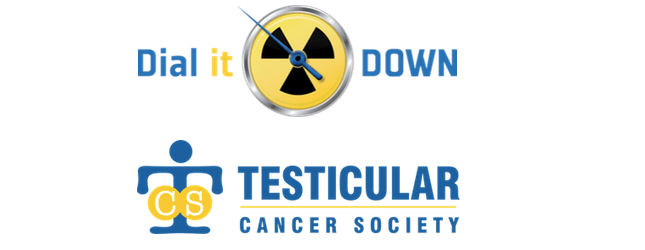About Dial it Down Low Dose CT Campaign
Dial it Down is a public awareness campaign by the Testicular Cancer Society to increase awareness about low-dose Computed Tomography (CT) technology.
Our main goal is to help reduce the risk of unnecessary exposure to ionizing radiation that is a part of necessary CT scans.
Low Dose CT Campaign Goals
- To reduce confusion about medical imaging radiation as it relates to CT scans.
- To responsibly give an honest and understandable explanation about radiation as it relates to risk of developing cancer.
- To increase the appropriate use of low dose CT technology.
- To facilitate communications between patients, physicians and radiology departments about opportunities to reduce radiation dose in CT.
- To increase patient’s awareness of their radiation exposure and previous imaging studies.
- To increase and encourage patient preference in selecting imaging locations with low dose CT capabilities.
Low Dose CT Campaign Background
Testicular cancer has been one of the success stories when it comes to the treatment of cancer. Survival rates have increased dramatically over the last few decades thanks to the introduction of effective chemotherapy treatments in the late 1970s. In fact, testicular cancer serves as a model of success for other solid cancers to follow. With the increasing survival rates, the attention turned towards reducing long-term side effects of treatments. It was realized that 80% of patients diagnosed at an early stage could be treated by simply removing the affected testicle. Thus, the need for treatments, such as radiation, chemotherapy or more surgery after the testicle removal, is unneeded and even overtreatment in 80 of 100 patients that are diagnosed. This realization led to the development of surveillance protocols or a “watch and wait” approach where patients undergo repeated physical exams, lab tests, X-rays and CT scans. If the testicular comes back then the more involved treatments are needed.
Surveillance protocols are very rigorous and guidelines a recently as 2010 indicated the need for 16 to 18 CT scans in the first 5 years after diagnosis. These frequent CT scans raised questions of the safety of this much radiation from CT scans, especially since most men are diagnosed at an early age (20-35 years old). The fear is that the exposure to radiation from frequent CT scans will lead to the development of secondary cancers 20 or 30 years later.
The Testicular Cancer Society realized that this fear of developing cancer from CT scans, while small, is a reality and that the best way to reduce one’s risk of developing cancer from exposure to CT radiation is to reduce the amount of radiation. However, one can’t just skip surveillance appointments and this is where low dose CT technology plays a huge role. Low dose CT is able to deliver the same quality of images for the radiologist to check for cancer while reducing the amount of radiation by 50-80%.
Dial it Down was born because we wanted to help raise awareness of low dose CT for others facing surveillance for testicular cancer. Recent guidelines have even reduced the frequency of CT scans needed for surveillance, from 16-18 to 8-16 scans, which will help reduce radiation exposure in testicular cancer survivors in addition to the use low dose CT.
IT’S NOT ALL ABOUT TESTICULAR CANCER
Adolescent and Young Adult Cancer Survivors Benefit Too
The Testicular Cancer Society realizes that testicular cancer survivors are not the only people that can benefit from low dose CT. Any cancer survivors that are going to be undergoing multiple CT scans can really benefit from low dose CT. This is especially true for the Adolescent and Young Adult Cancer community as the risk of developing cancers from radiation increase the younger we are at the time of exposure.
Patients with Long-Term or Recurrent Disease Benefit Too
Many patients that undergo repeated CT scans and low dose CT is sure to benefit them all with reduced exposure to radiation. Studies indicate those patients most at risk from repeated Ct scans are those with long-term or recurrent disease, such as kidney stones, Crohn’s disease, chronic abdominal pains and frequent ER visitors.
Dial it Down! with Low Dose CT You Deserve MORE
Maximum Outcomes with Reduced Exposure



